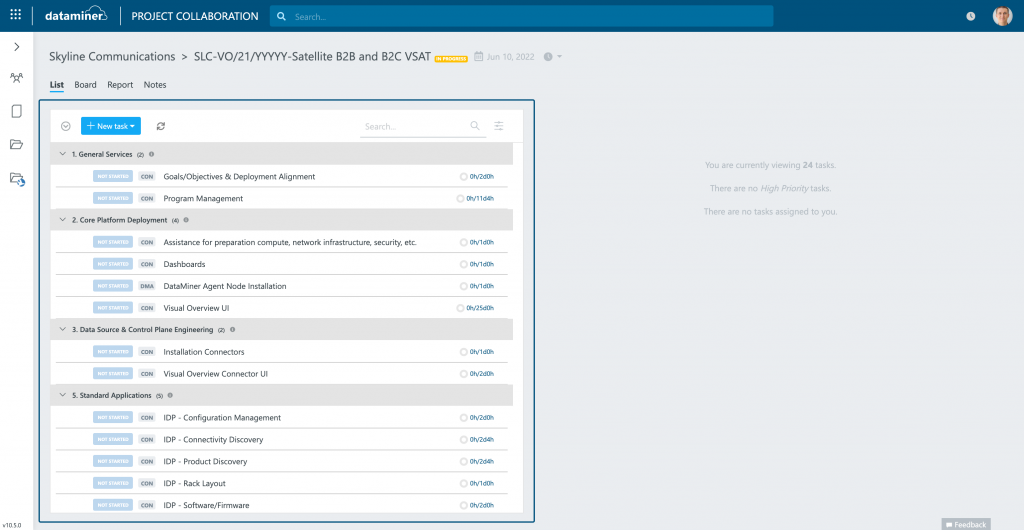Are you having difficulties interpreting your Order Projects on Project Collaboration? Don’t worry, it’s easier than it seems. Let’s have a look at how a Purchase Order translates into an Order Project and where you can find the necessary information.
Not familiar yet with DataMiner Project Collaboration? Project Collaboration is part of our DataMiner Cloud Platform (DCP) and enables agile collaboration between members of a distributed DevOps team. Learn more about it on the DataMiner Cloud Services page.
The image below shows the two documents side by side:
- On the right-hand side, there’s a standard example of a Skyline quote for a small project. (The Skyline quote serves as the base of the eventual Purchase Order (PO)).
- On the left-hand side, you can see how this quote (and the resulting PO) translates into an Order Project on Project Collaboration.
Below the image, you’ll find detailed information about each numbered section.
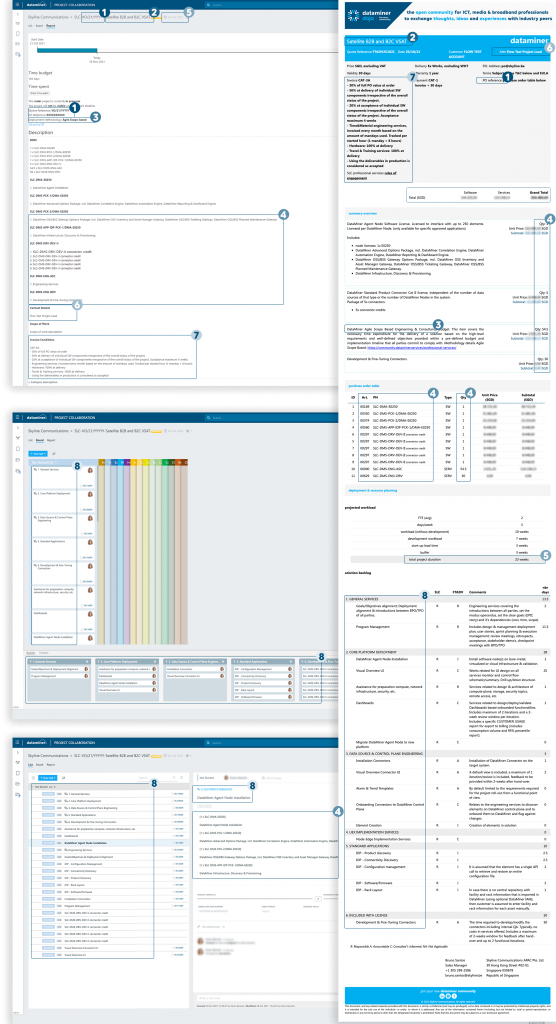
1 – PO reference
The PO reference is located in the upper-right section of the quote and in the upper-left section of the “Report” view on Project Collaboration, right below the Skyline PO reference. That Skyline PO reference is also listed in the project title at the very top of the project page on Project Collaboration.

2 – Project title
The project title is in the upper-left corner of the quote and at the top of the project page on Project Collaboration.

3 – Deployment methodology
If the quote contains an engineering and consultancy budget, the deployment methodology is mentioned in the summary overview of the quote, as well as in the top-left corner of the “Report” view on Project Collaboration. For more information about the different deployment methodologies that Skyline offers, you can visit the Professional Services page on Dojo.

4 – Product codes and quantities
The product codes and quantities ordered are specified in the purchase order table of the quote. On Project Collaboration, in the upper-left corner of the “Report” view of a project, there is a button to open “Attachments”. Among these “Attachments”, there will always be an .xlsx file (titled “customer name Skyline PO reference PO reference”) containing the “Bill Of Material” (BOM) specifying, among many other details, the purchased product codes and quantities. The BOM is summarized in the “Description” field of the “Report” view. For each line item in the BOM, a corresponding task is created under the designated project in the Project Collaboration “List” and “Board” view.
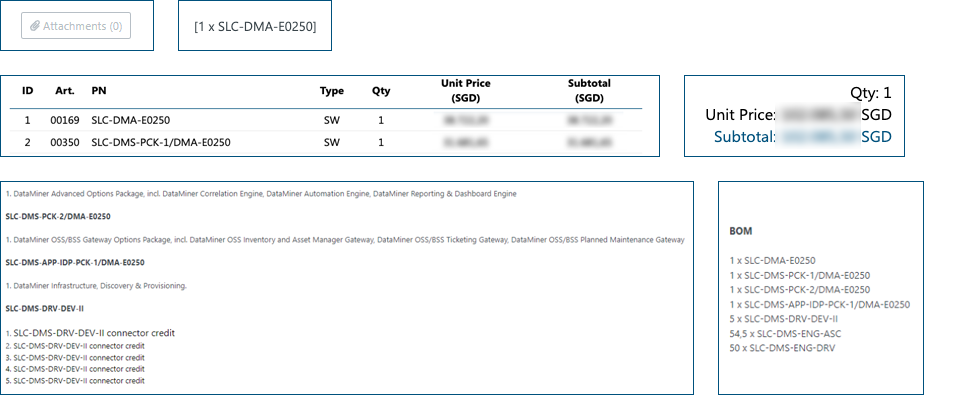
Line items for DataMiner software license options that belong to the same DMA are typically grouped together in one task, like in the example below. In tasks linked to a line item from the BOM, you’ll consistently find the quantity and product code.
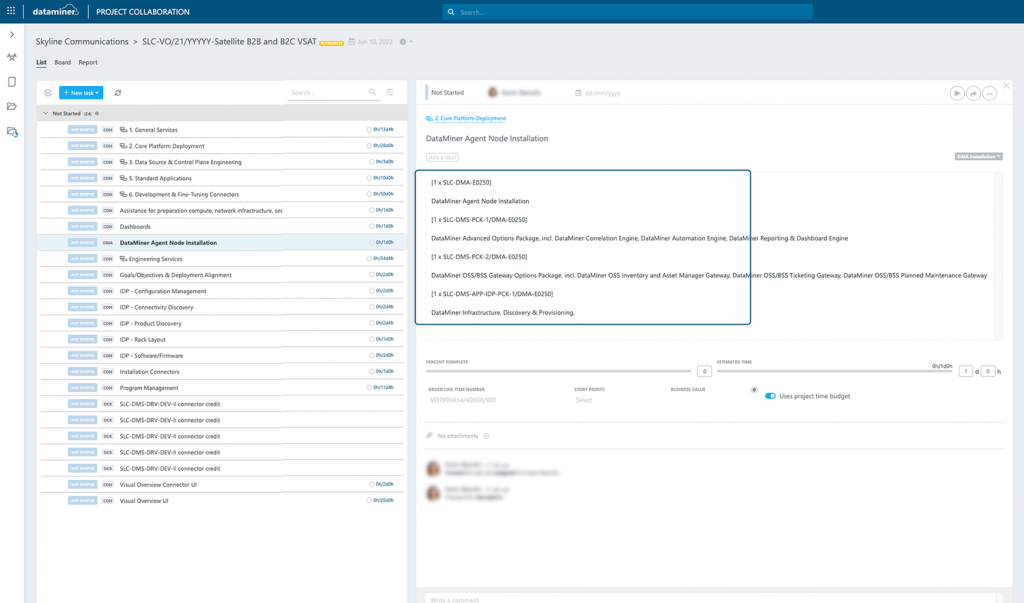
5 – Timing information
The project due date is calculated based on the start date of the project and the total project duration, which can be found in the “projected workload” section of “deployment & resource planning” on the quote. The project due date is located at the top of the project page on Project Collaboration and can also be found on the right-hand side of the timeline in the “Report” view.

6 – Contact details
The user contact details are copied from the top-right section of the quote onto the “Description” field in the “Report” view on Project Collaboration.

7 – Invoice conditions
The invoice conditions from the upper-left side of the quote are duplicated onto the bottom of the “Description” field of the “Report” view on Project Collaboration.
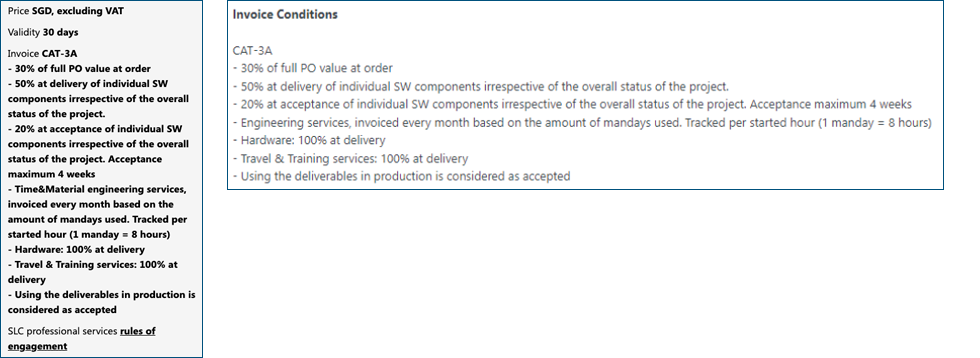
8 – Solution backlog
The buckets and subtasks of the solution backlog on the quote are automatically converted into tasks on the “List” and “Board” view of the project on Project Collaboration. At the bottom of the “Board” view, there is a dedicated “Buckets” section where the buckets and subtasks are visualized.
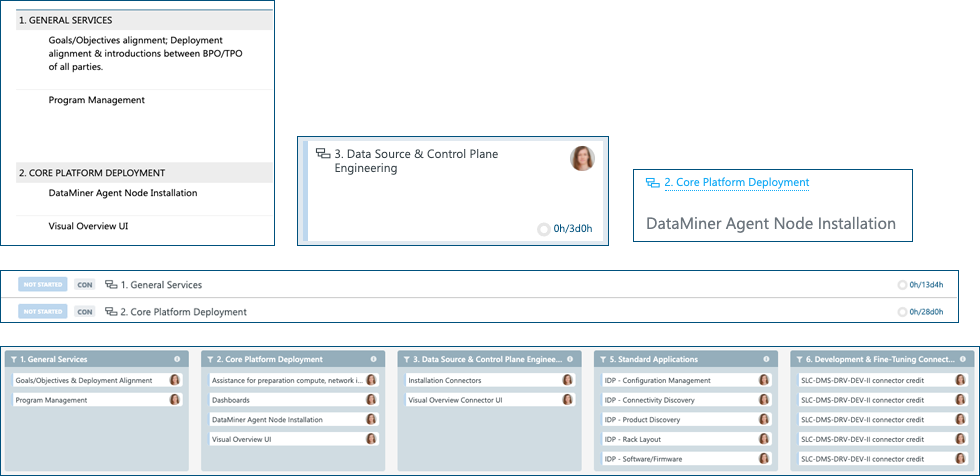
Would you like to have the exact same view grouped per bucket as the “List” view, like in the example below? Then press the “Filter” icon, and choose “Sort by Group”.
